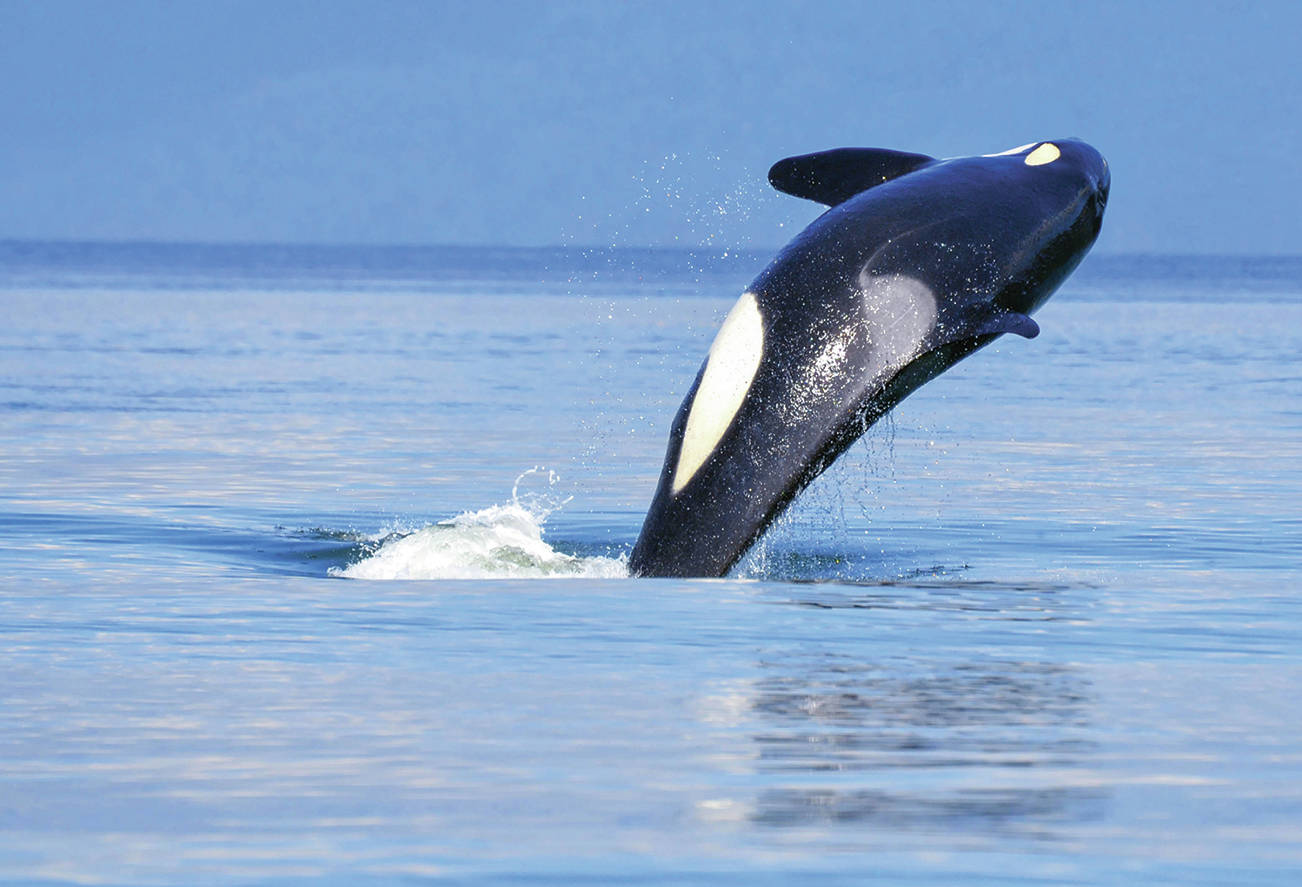From breaching orcas to fluttering butterflies, San Juan County is home to a variety of endangered species, according to Ranger Jeff.
“When I refer to endangered species I don’t only mean those protected by law,” Ranger Jeff said. “I’m referring to any flora or fauna that is being stressed inside of a particular ecosystem.”
Ranger Jeff, who has worked at the San Juan Island National Historical Park since 2018, prefers not to go by his full name in order to keep the primary focus on the park.
In his talk titled “Nature Matters: Threatened: Stories of Endangered Species in the Islands,” Ranger Jeff will discuss a variety of endangered species found in and around the Salish Sea from 7-9 p.m., Wednesday, Aug. 19, on Zoom. All of the library’s Zoom events require an invitation. To attend, request an invitation from Boyd Pratt at bpratt@sjlib.org at least 30 minutes before the program.
There are 45 species identified by Washington state as endangered, threatened or sensitive, according to Ranger Jeff. An additional 102 species are identified as candidates for listing by the state. Nationally the Environmental Protection Agency lists 2,649 endangered species —30 are believed to reside in Washington and 10 in San Juan County.
“We have a single listed species in the park — the island marble butterfly,” he continued, “And one we are looking at [adding], the sand-verbena moth.”
The number of endangered and threatened species in Washington State and around the Pacific Northwest is striking, Ranger Jeff said. Species of concern regionally include marine life; birds; mammals; invertebrates; and plants. During the presentation, a few of the species he will touch on include orcas; island marble Bbutteries; sea otters; sand-verbena moths; and northern spotted owls.
“Unfortunately we have a lot to choose from,” Ranger Jeff said, adding that a few more may be added in a few years.
Marbled murrelets and American white pelicans are both struggling, according to Ranger Jeff. The pelicans, he explained, are being affected by human disturbance in breeding areas, and murrelets are suffering from the continuous loss of old-growth forests. Climate change and poor ocean conditions also threaten both birds, issues that are not likely to decrease in the near future.
Orcas and the marble butterfly are the two most well known of the island species in danger and are prevalent on Ranger Jeff’s mind.
“Losing any species is very difficult to watch, but if we lose the orcas, well it’s just unthinkable,” he said.
Ranger Jeff added that in regards to the butterfly, there has been a massive amount of time, energy and effort from state and local agencies, private landowners and volunteers that it would be a travesty to either species.
“Will society fall on the loss of a single species? No, but I wonder what it says about our species when we lose another because of our activity,” Ranger Jeff said.
Along those lines, several abalone species are on the federal endangered species list — including white, pink pinto, and green. Abalone is a shelled sea small that can live up to 30 years. These mollusks are threatened because people like to eat them, and because of their shimmery shells. Primary threats are harvesting by humans and sea temperature rises.
“Think about that for a second,” Ranger Jeff said. “The primary reason these species might not survive is because they taste good and their shells are beautiful.”
The islands have already lost species, Ranger Jeff pointed out — gray wolves, elk and beaver.
Bald Eagles are an Endangered Species Act success story, however. Gray whales have also been making a come back, along with Olympia Oysters and Fishers. Fishers are in the weasel family, and according to Ranger Jeff, have been successfully reintroduced to the Olympic National Park and are currently being reintroduced to the North Cascades National Park.
“There are successes, but many more losses. Such small predators are very valuable in any ecosystem,” Ranger Jeff said. “We have invasive red foxes to fill the gap, but wouldn’t it be nice to see a native predator species return?”
As many of the threats for these species are human-caused, people also hold the key to their survival.
“Landowners can actually do a lot,” Ranger Jeff said. “First they can educate themselves about the species in the area, and factors that are causing the threats.”
Since many species are threatened by spoiled habitat, landowners can also be conscious about what they put into the water and air, Ranger Jeff added. Giving back to the ecosystem in the form of food for species, like growing flowers for pollinators, or providing habitat where they can reside. Landowners or not, each individual can add their personal voice and influence in efforts to protect species.
“No species is going to recover without people who care. The greater the number of people who show they care, the greater the impact,” Ranger Jeff said. “We created most of the problems impacting species and we can make changes if we choose to.”
For more information about the Nature Matters series, visit www.sjlib.org. The last “Nature Matters” will occur in September, but Ranger Jeff hopes to continue the series next year. He encourages those with topic ideas to email Pratt at bpratt@sjlib.org.



